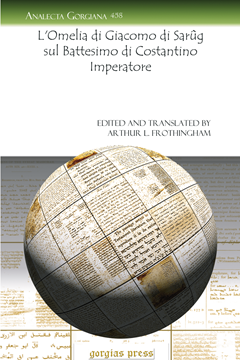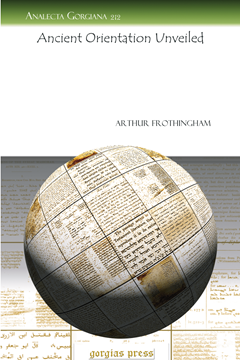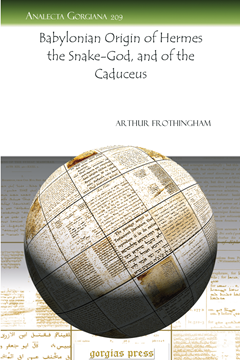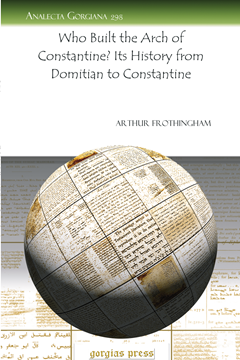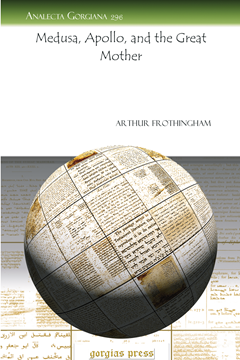Arthur L. Frothingham
L'Omelia di Giacomo di Sarûg sul Battesimo di Costantino Imperatore
Edited and Translated by Arthur L. Frothingham
Series: Analecta Gorgiana 458
ISBN: 978-1-60724-896-5
Frothingham here offers the Syriac text, with an annotated Italian translation, of Jacob of Sarug’s homily on the Baptism of Constantine (832 lines), based chiefly two manuscripts, one from the Vatican and the other from the British Museum.
$51.00 (USD) $30.60 (USD)
Ancient Orientation Unveiled
Series: Analecta Gorgiana 212
ISBN: 978-1-60724-441-7
Frothingham presents an ambitious overview of the development of orientation, or the directionality of sacrifice, prayer, and ritual, played a key role in ancient ceremonies, in the practice of ancient religions.
$51.00 (USD) $30.60 (USD)
Babylonian Origin of Hermes the Snake-God, and of the Caduceus
Series: Analecta Gorgiana 209
ISBN: 978-1-60724-438-7
Arthur Frothingham, one of the founding fathers of Art History, here discusses the origins of Hermes, and suggests that the prototype of Hermes was an Eastern deity of Babylonian extraction.
$38.00 (USD) $22.80 (USD)
Who Built the Arch of Constantine? Its History from Domitian to Constantine
Series: Analecta Gorgiana 298
ISBN: 978-1-60724-527-8
Arthur Frothingham, one of the founding fathers of Art History, here discusses the problem of the Arch of Constantine, whose form and artwork is at odds with the artwork of the era of Constantine.
$45.00 (USD) $27.00 (USD)
Medusa, Apollo, and the Great Mother
Series: Analecta Gorgiana 296
ISBN: 978-1-60724-525-4
Arthur Frothingham, one of the founding fathers of Art History, here discusses the problem of the Gorgon in ancient Greek art by arguing that Medusa represents a lost prehistoric goddess.
$36.00 (USD) $21.60 (USD)
A Revised List of Roman Memorial and Triumphal Arches
Series: Analecta Gorgiana 278
ISBN: 978-1-60724-507-0
Arthur Frothingham, a father of the discipline of Art History, here lists and categorizes the form and development of the Roman triumphal arch.
$37.00 (USD) $22.20 (USD)
The Philosophy of Art
Series: Analecta Gorgiana 271
ISBN: 978-1-60724-500-1
A. L. Frothingham, one of the founding fathers of Art History as a discipline, answers the question “What is Art?”
$38.00 (USD) $22.80 (USD)
Introduction of Gothic Architecture into Italy by the French Cistercian Monks.
Series: Analecta Gorgiana 267
ISBN: 978-1-60724-496-7
This series of papers shows that a group of monuments erected by the French Cistercian monks, and here for the first time fully described and illustrated, were the earliest Italian buildings using transitional-Gothic architecture.
$47.00 (USD) $28.20 (USD)
Notes on Roman Artists of the Middle Ages
Series: Analecta Gorgiana 264
ISBN: 978-1-60724-493-6
In this series, A. J. Frothingham Jr. reviews previously unstudied papal buildings, suggesting new members of the schools of Laurentius and Paulus and linking specific artists to various buildings.
$40.00 (USD) $24.00 (USD)
Notes on Byzantine Art and Culture in Italy and Especially in Rome
Series: Analecta Gorgiana 255
ISBN: 978-1-60724-484-4
A. J. Frothingham discusses Byzantine influences in the art and architecture of medieval Rome, bringing to light the influence of Byzantium on Italy beyond the fall of the Western empire.
$44.00 (USD) $26.40 (USD)

